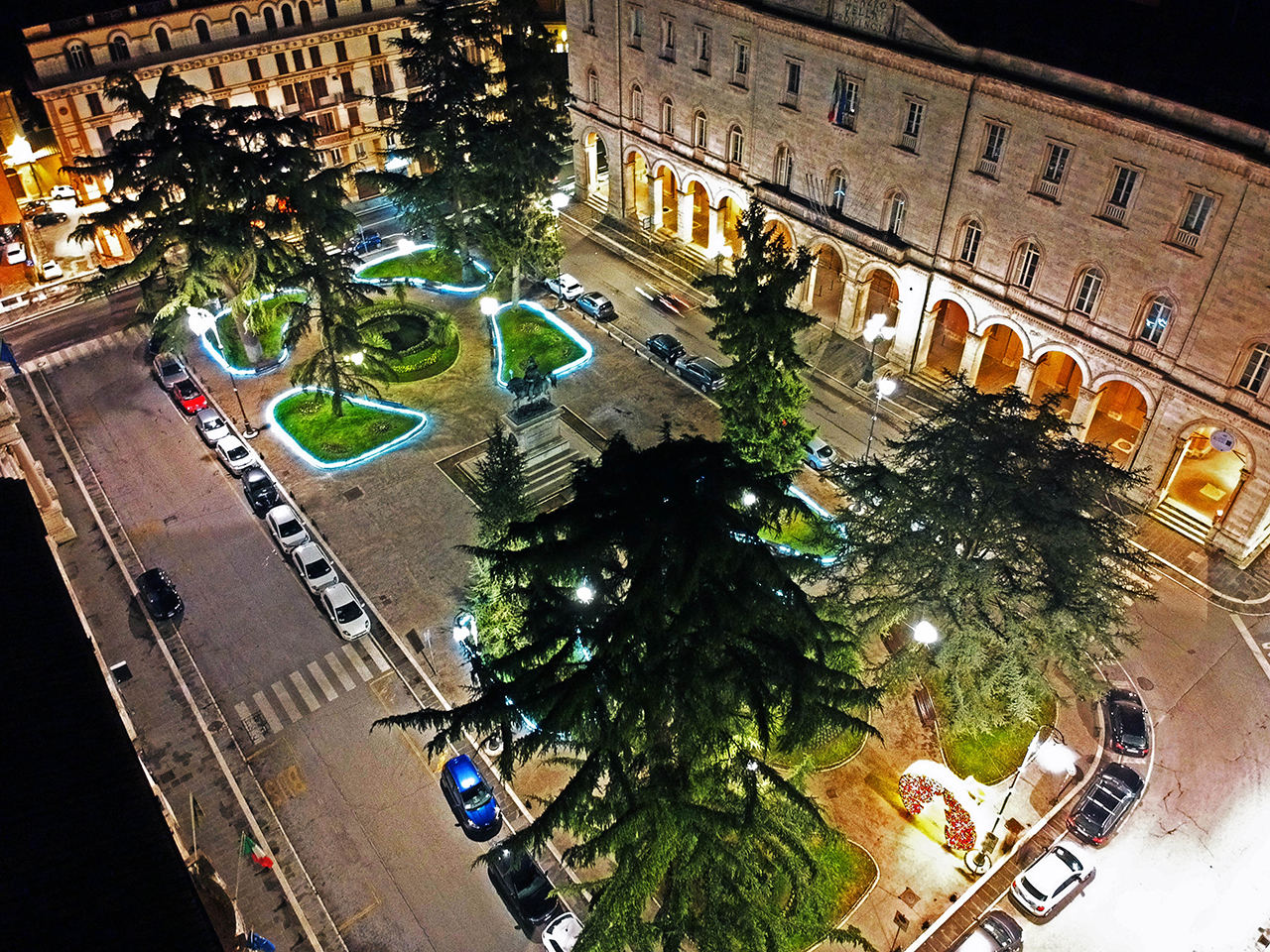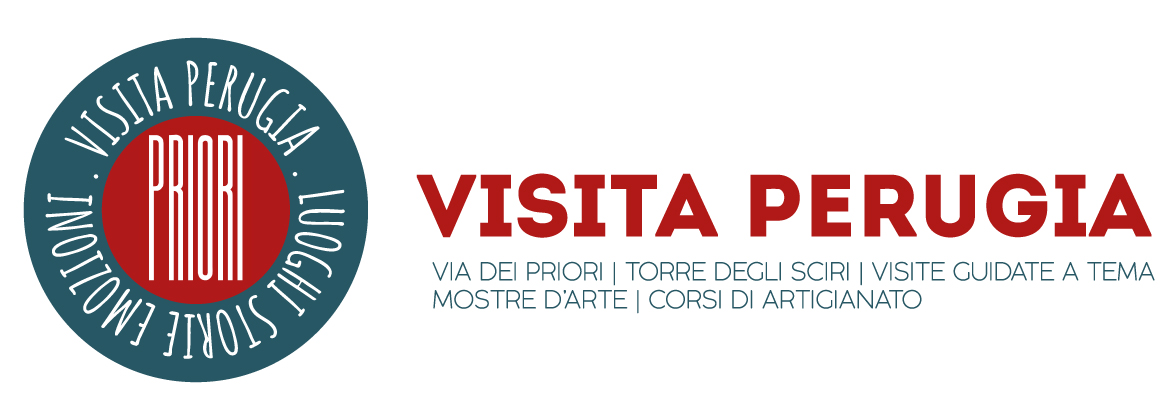The ancient city. Perugia is an Italian municipality with 165.763 inhabitants, capital of the homonymous province and of Umbria. Founded by the Etruscans, it was one of the great twelve locations (dodecapoli) of Etruria under the name of Perusna (toponym that at the time of the Roman Empire became Perusia). The Tiber Valley is situated in a dominant position on the top of a hilly relief divided into a series of ridges that has conditioned its urban development. The original Etruscan walls, still visible today, enclose Colle Landone and Colle del Sole on which the city stands. With a large historic center, the city retains a harmonious medieval aspect and has the characteristics of a scattered municipality, with the presence of new districts in the flat areas, numerous fractions spread throughout the vast municipal territory and a multitude of green areas and fields.
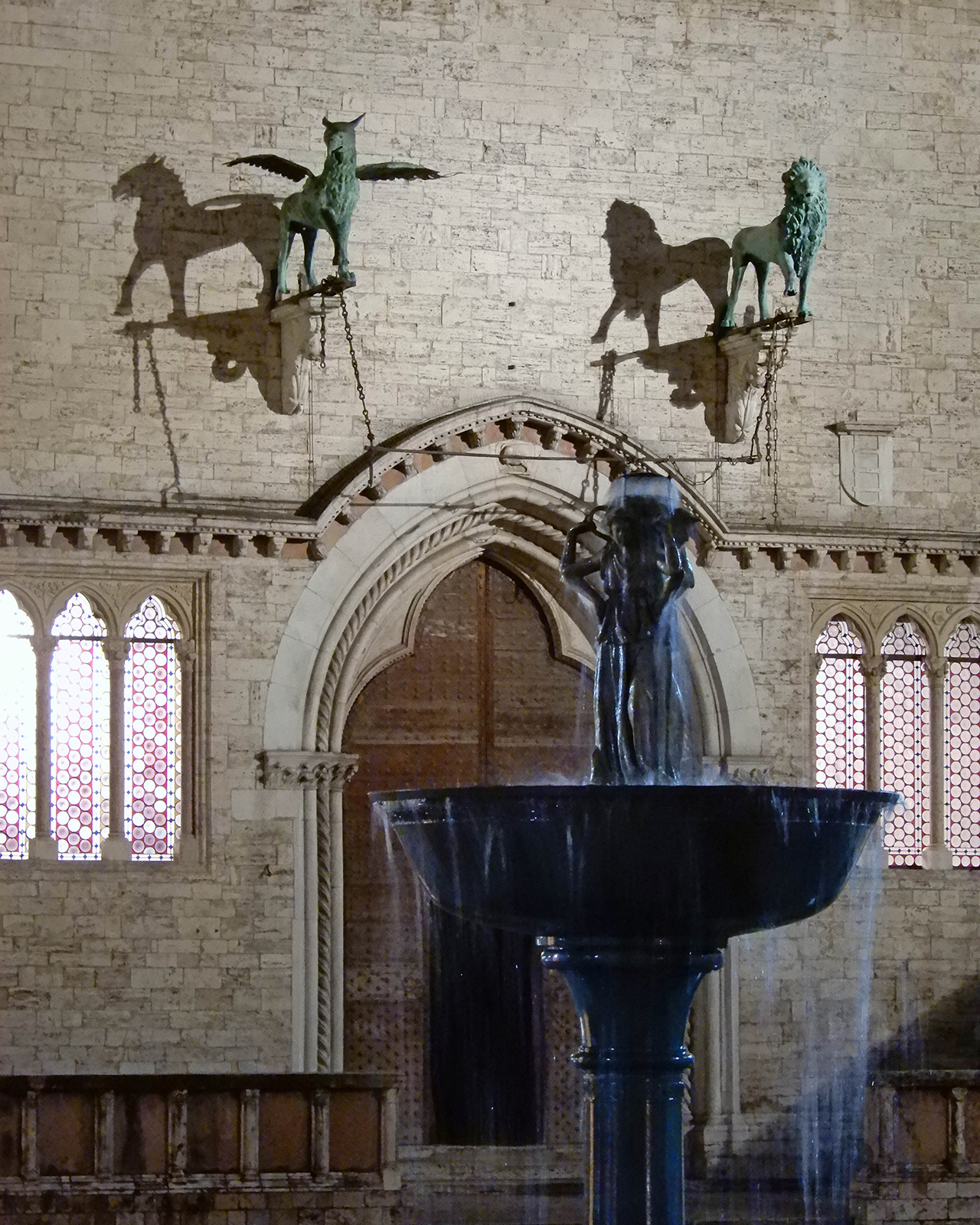
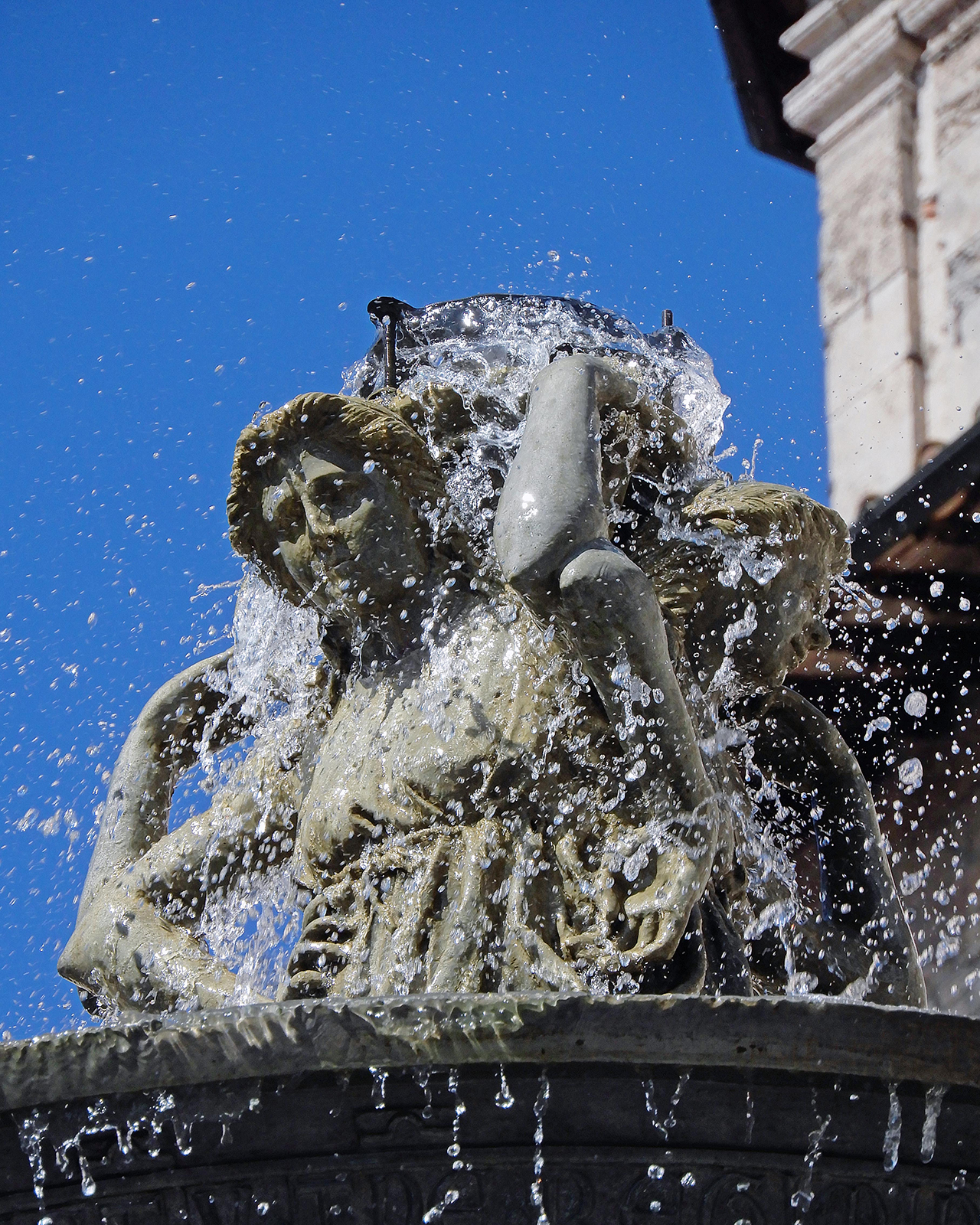
History. After the first settlements by Umbrian populations, Perugia was colonized by the Etruscans (VI-V century B. C.), becoming one of the twelve cities of the confederation. With the Battle of Sentino (295 B.C.), Perugia became part of the Roman orbit; following the social war (1st century B.C. ) was integrated with Rome, with the concession in 89 B. C. of citizenship. It was the scene of the civil war between Antonio and Ottaviano Augusto and was set on fire in 41 BC. during Bellum Perusinum. Perugia was later rebuilt by Augustus, who became emperor; in his honor the city took the name of Augusta Perusia. In the early Middle Ages it was long under the rule of the Byzantines, interrupted only by the brief occupation of the Goths (547) and by that, lasting a few decades, of the Lombards. Established in free common at the beginning of the eleventh century, Perugia exercised an expansionist policy at the expense of neighboring cities, the cause of continuous wars, often fought with papal support, which dragged on until the fourteenth century. It is in this period of expansion that the houses of the richest nobles and bourgeois began to equip themselves with towers, earning the city the name of Turrena.
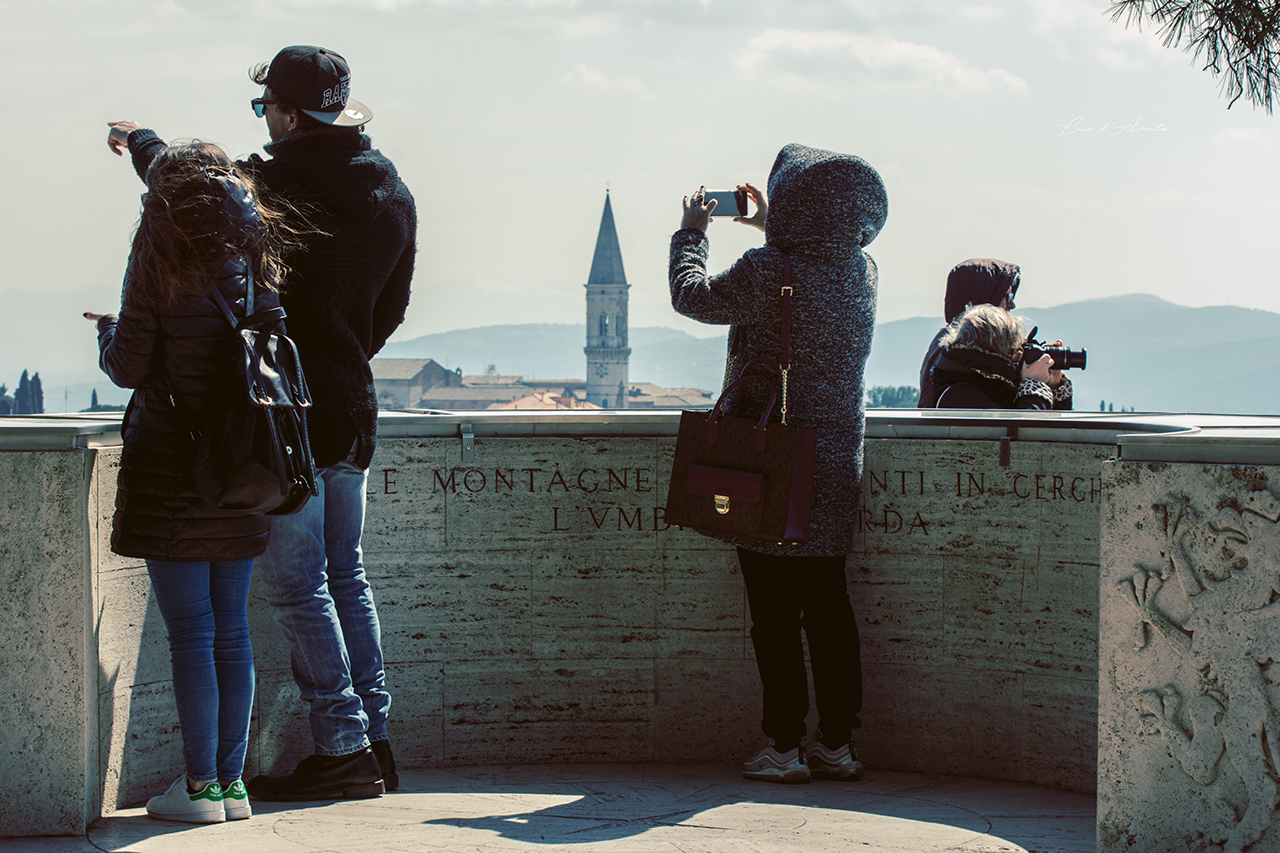
Of the numerous towers of that time there are several testimonies still observable today, such as the Bell Tower of the Municipality, the Tower of Porta Sant’Angelo and the Tower of the Sciri. The city was at the same time torn by bitter internal struggles, which saw the two factions of the Ghibellines (Beccherini) and the Guelphs (Raspanti) opposing each other and lasted uninterrupted until 1393, when Biordo Michelotti established the noble regime. Passed in 1416 under the rule of Braccio Fortebracci from Montone, at his death the city experienced the bloody conflict between the Oddi family and that of the Baglioni, whose supremacy ended when Pope Paul III subdued the city and had the fortress built there that took its name from him. In 1798 Perugia was chosen by the French as the capital of the Republic of Tiber; after the fall of Napoleon returned to be part of the Papal State, which in June 1859 repressed in the blood (Massacres of Perugia) a patriotic uprising. In September 1860 the city was occupied by Piedmontese troops and united with the Kingdom of Italy.
Among the monuments and historic buildings
not to be missed…
Arco Etrusco
Basilica di San Pietro
Cattedrale di San Lorenzo
Fontana Maggiore
Galleria Nazionale dell’Umbria
Palazzo dei Priori
Pozzo Etrusco
Rocca Paolina
Torre dei Sciri
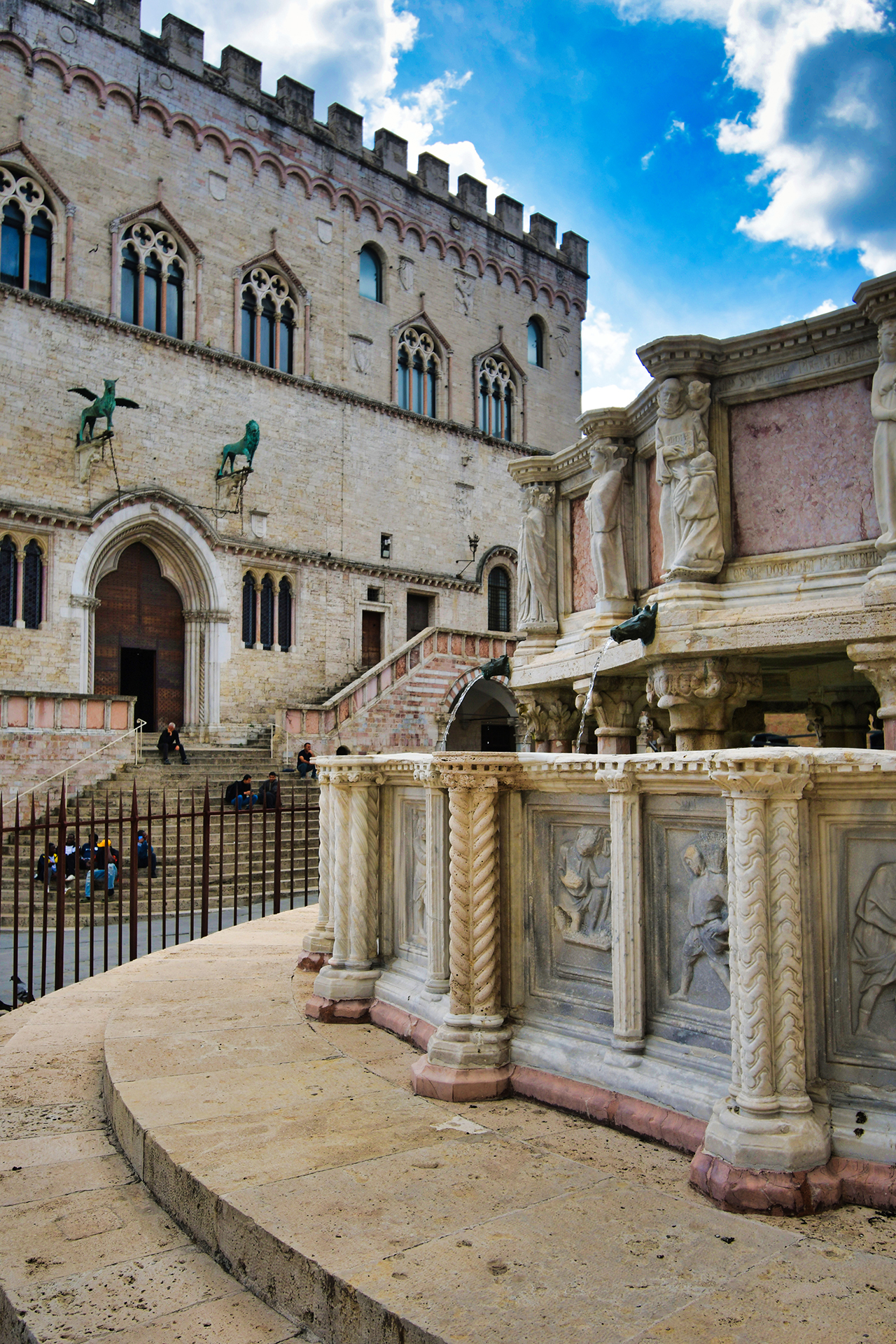
Among the monuments and historic buildings
not to be missed…
Arco Etrusco
Basilica di San Pietro
Cattedrale di San Lorenzo
Fontana Maggiore
Galleria Nazionale dell’Umbria
Palazzo dei Priori
Pozzo Etrusco
Rocca Paolina
Torre dei Sciri
Corso Vannucci. The main street of Perugia that takes its name from Pietro Vannucci, a painter born in Città della Pieve and famous with the name Il Perugino, develops between imposing and important buildings: Palazzo dei Priori (on the ground floor the Collegio del Cambio, frescoed by Perugino, and the Collegio della Mercanzia), Palazzo dei Notari (fifteenth century), Casa di Baldo degli Ubaldi (fifteenth century), Chiesa di Sant’Isidoro (deconsecrated), Palazzo Donini (1716). The artery starts from Piazza IV Novembre and ends in Piazza Italia. From the avenue there are various streets and alleys: Via Fani, Via Mazzini and Via Danzetta connect it with Piazza Matteotti. The picturesque Via dei Priori intersects with the medieval alleys Via Scura, Via della Luna and Via delle Streghe. Before Piazza Italia, the avenue is finally intersected by Via Bonazzi and Via Forte. At the middle of the avenue, at the intersection with Via dei Priori, we point out the entrance to the National Gallery of Umbria (GNU).
Corso Vannucci (Avenue Vannucci), called the Salotto Buono in Perugia, is the place where the Perugians go to ‘make a bath’ that in Perugian dialect is equivalent to saying take a walk. During the summer the avenue is animated by the presence of tables of bars and restaurants, which become the ideal place to spend a pleasant evening with friends, especially during the Umbria Jazz music festival.
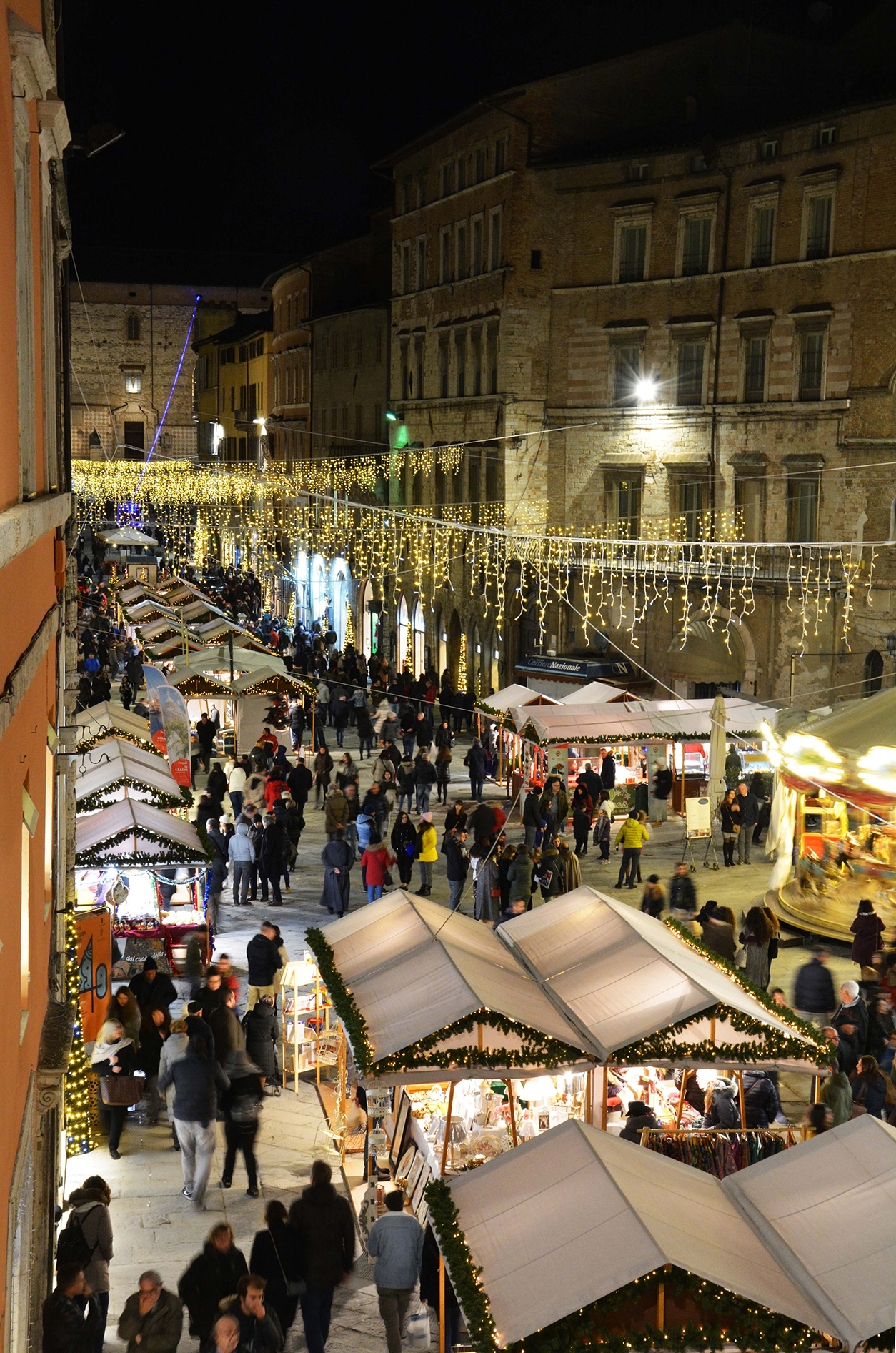
Corso Vannucci (Avenue Vannucci), called the Salotto Buono in Perugia, is the place where the Perugians go to ‘make a bath’ that in Perugian dialect is equivalent to saying take a walk. During the summer the avenue is animated by the presence of tables of bars and restaurants, which become the ideal place to spend a pleasant evening with friends, especially during the Umbria Jazz music festival.
The city is an important university campus. Here are located the University of Perugia, one of the oldest universities of Italy and the world, and the University for Foreigners, the oldest Italian university oriented to international students. The Umbra Institute should also be mentioned in this regard, which offers a wide range of courses to foreign students from the United States. Worthy of note is also the University of Flavours, an international center for training and culture of nutrition where issues related to tourism and food and wine are addressed and developed.
Perugia is also a city dedicated to the protection of Italian artistic and musical culture. This is testified, for example, by the Conservatory of Music ‘Francesco Morlacchi’, that is the only state institution of high artistic-musical training present in Umbria. The city is also home to the second oldest academy in Italy, the ‘Pietro Vannucci‘ Academy of Fine Arts. On the ground of Perugia there are also two design institutes, the Italian Institute of Design (IID) and the New Institute of Design (NID), and the Theatrical University Center (C.U.T.).
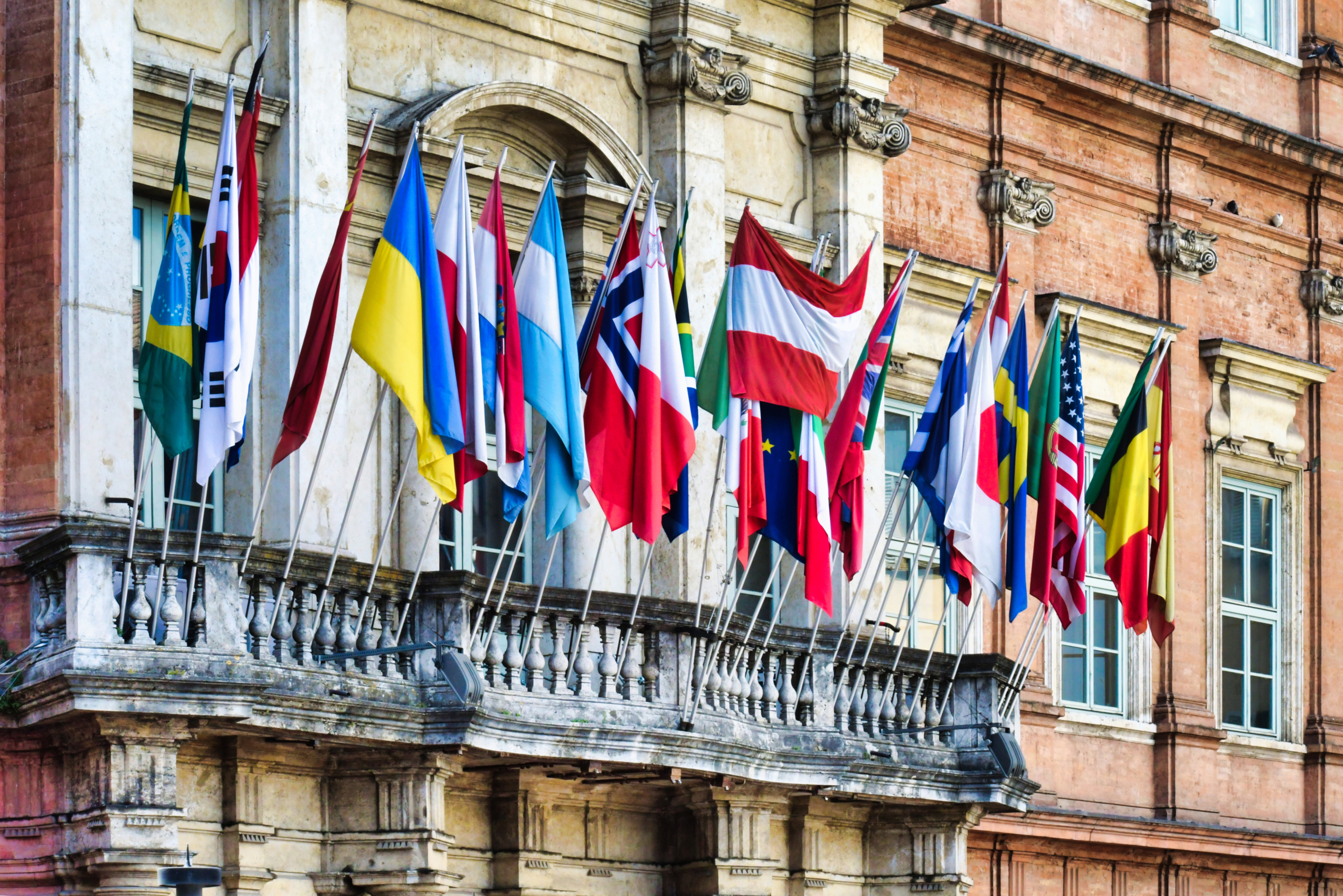
The city is an important university campus. Here are located the University of Perugia, one of the oldest universities of Italy and the world, and the University for Foreigners, the oldest Italian university oriented to international students. The Umbra Institute should also be mentioned in this regard, which offers a wide range of courses to foreign students from the United States. Worthy of note is also the University of Flavours, an international center for training and culture of nutrition where issues related to tourism and food and wine are addressed and developed.
Perugia is also a city dedicated to the protection of Italian artistic and musical culture. This is testified, for example, by the Conservatory of Music ‘Francesco Morlacchi’, that is the only state institution of high artistic-musical training present in Umbria. The city is also home to the second oldest academy in Italy, the ‘Pietro Vannucci‘ Academy of Fine Arts. On the ground of Perugia there are also two design institutes, the Italian Institute of Design (IID) and the New Institute of Design (NID), and the Theatrical University Center (C.U.T.).
Curiosities and events. Perugia has hosted Umbria Jazz since 1973, the popular music festival that takes place every summer. The city participates with Assisi in the annual March for Peace and hosts the UN Assembly of Peoples every two years. In October there is the Eurochocolate event, dedicated to the culture and the chocolate industry. Another important event, the Love Film Festival, takes place here in the first week of May and is the first film festival focused on the theme of love. The romantic scenery, the collected environment and the myth of the Bacio Perugina are all ingredients that make Perugia the ideal setting for this event. The city is also home to The International Journalism Festival, which sees the participation of numerous journalists, speakers and volunteers from all over the world every year. As for shopping , it is very famous the Fair of the Dead that is held on the occasion of the holiday of All Saints and includes more than 500 stands, in which you can find items that meet the needs of every sector and age group. During the Christmas period, however, attention is focused on the markets that are set up both inside the Rocca Paolina, and in the historic center, mainly in Corso Vannucci. During the year, many events are organized by Enjoy Perugia, from markets to music evenings in the various squares of the historic center.
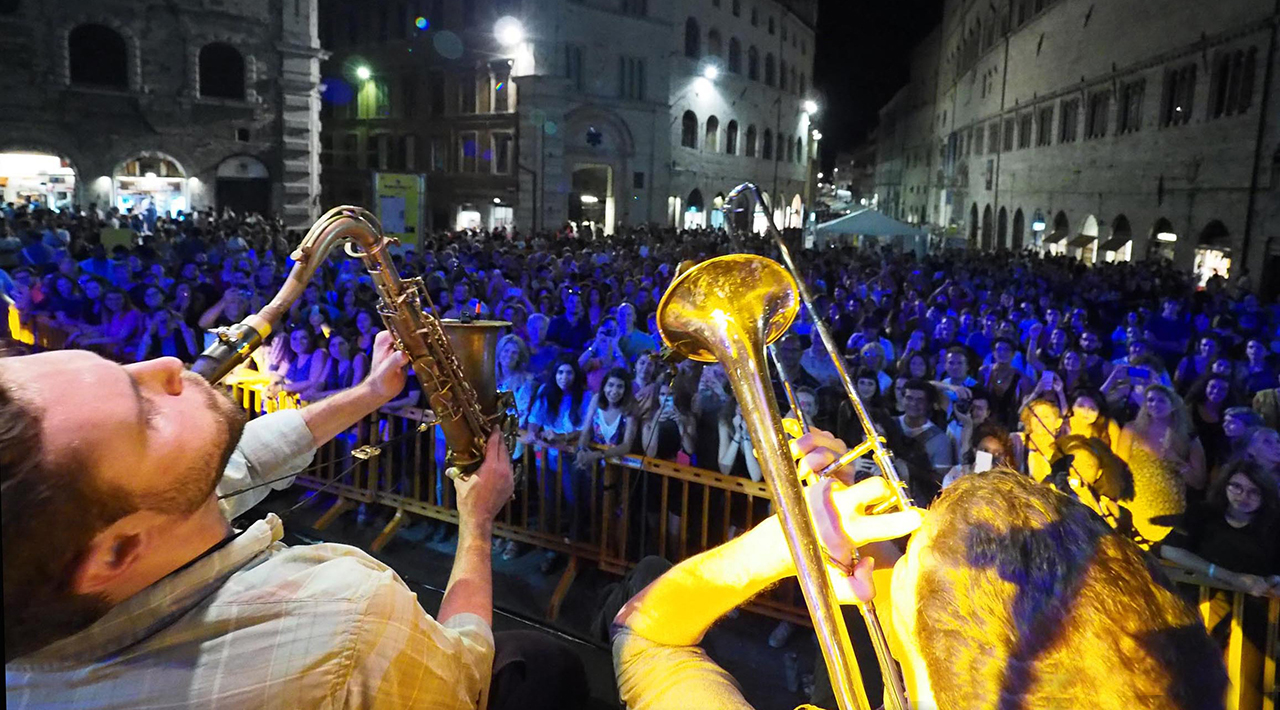
Characters. Perugia was home to numerous artists such as Pinturicchio (1545 -1513), Perugino (1448 – 1523), Galeazzo Alessi (1512-1572), Vicenzo Danti (1530-1576) and Gerardo Dottori (1884-1977), the naturalist Orazio Antinori (1811-1882) founder of the Italian Geographic Society, the writer Giuseppe Prezzolini (1882-1982), the philosopher Aldo Capitini (1899-1968), founder of the March for Peace, and the poet Sandro Penna (1906-1977). The city also gave birth to the mathematician and astronomer Ignazio Danti (1536-1586), who revolutionized modern cartography and reformed the calendar from Julian to Gregorian.
Perugia was also a destination for artistic training of important Renaissance figures such as Raphael, Pietro Aretino, Piero della Francesca, Luca Signorelli; in this regard, the National Gallery of Umbria is of considerable interest, which preserves paintings by Blessed Angelico, Piero della Francesca, Duccio di Buoninsegna, as well as Perugino and Pinturicchio. Here are also kept the sculptures of Arnolfo di Cambio and Francesco di Giorgio Martini.
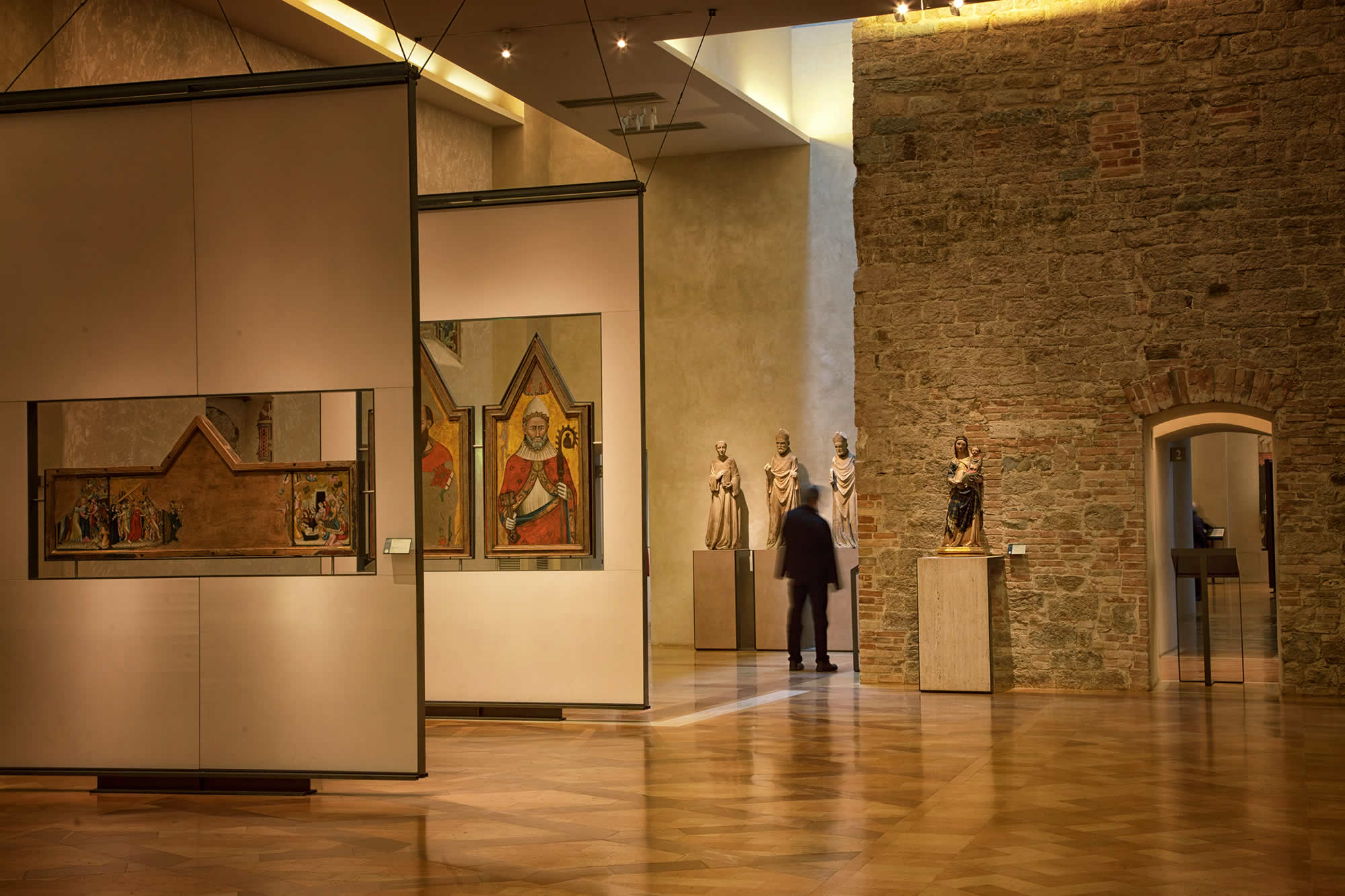
Perugia was also a destination for artistic training of important Renaissance figures such as Raphael, Pietro Aretino, Piero della Francesca, Luca Signorelli; in this regard, the National Gallery of Umbria is of considerable interest, which preserves paintings by Blessed Angelico, Piero della Francesca, Duccio di Buoninsegna, as well as Perugino and Pinturicchio. Here are also kept the sculptures of Arnolfo di Cambio and Francesco di Giorgio Martini.
